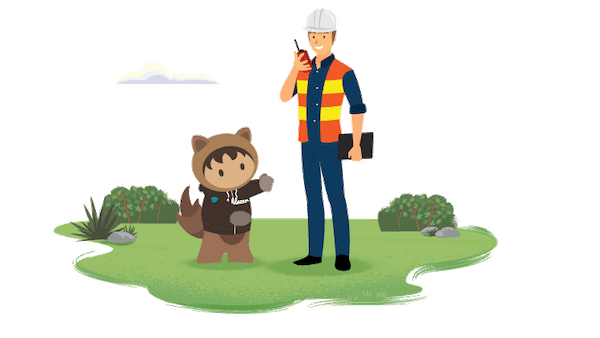
Enhancing the Customer Experience in Field Service
The how-to guide for improved satisfaction and loyalty
Customers expect great experiences
But many field service organizations are falling short with long service windows, mobile workers who are unable to resolve issues, or worse — workers who don’t show up. Most of the time, dissatisfied customers don’t even bother complaining — they just move on, and companies spend valuable resources trying to replace them.
The majority of service decision makers (82%) agree that their company’s customer service must transform to stay competitive. In the coming pages, you’ll learn how to improve the entire customer experience by streamlining dispatching schedules, ensuring exceptional day-of service, and offering added value with every service call.
Contents
Chapter 1: Streamline dispatch and scheduling

Move beyond manual processes.
Put customer needs first.
Flip the scheduling process to put customers’ needs first. Offer shorter service windows at times that are convenient for customers. To do this, look at the highest peak service hours and offer additional booking windows.
Self-service capabilities enable customers to arrange appointments through their preferred communication channel — phone, email, text, or webchat, for example — and on the device of their choosing. Use this functionality to advise them on what they need to do to prepare for a safe service visit, such as wearing a mask, cleaning the workspace, and social distancing. Customers also receive notifications about their service status and the estimated time of their field service worker’s arrival.
Create precise schedules.
“71% of customers expect companies to communicate with them in real time.”
Chapter 2: Provide exceptional day-of service

Chapter 3: Drive ongoing customer engagement

Traditional service models and tools are not designed to seamlessly collect and analyze service data as it comes in. After all, these systems are often manual and primarily designed for scheduling. But without robust and actionable data, there’s no easy way to drive continuous improvement in field service.
A single view of data makes it easy to measure service trends such as demand, job time, and work type. This helps to identify best practices and areas to improve efficiency.
Exceed customer expectations.


Blog
70% of Customers Prefer On-Site Service, Even Now — Is Your Field Service Ready to Deliver?

Blog
4 Ways to Drive Customer Engagement with Field Service

Blog
The 8 Metrics That Matter in Field Service – and How to Improve Them

Salesforce Field Service
Deliver trusted field service from anywhere — fast

Infographic
Perfect the Customer Experience in Field Service

Guide
The Field Service Customer Engagement Playbook




